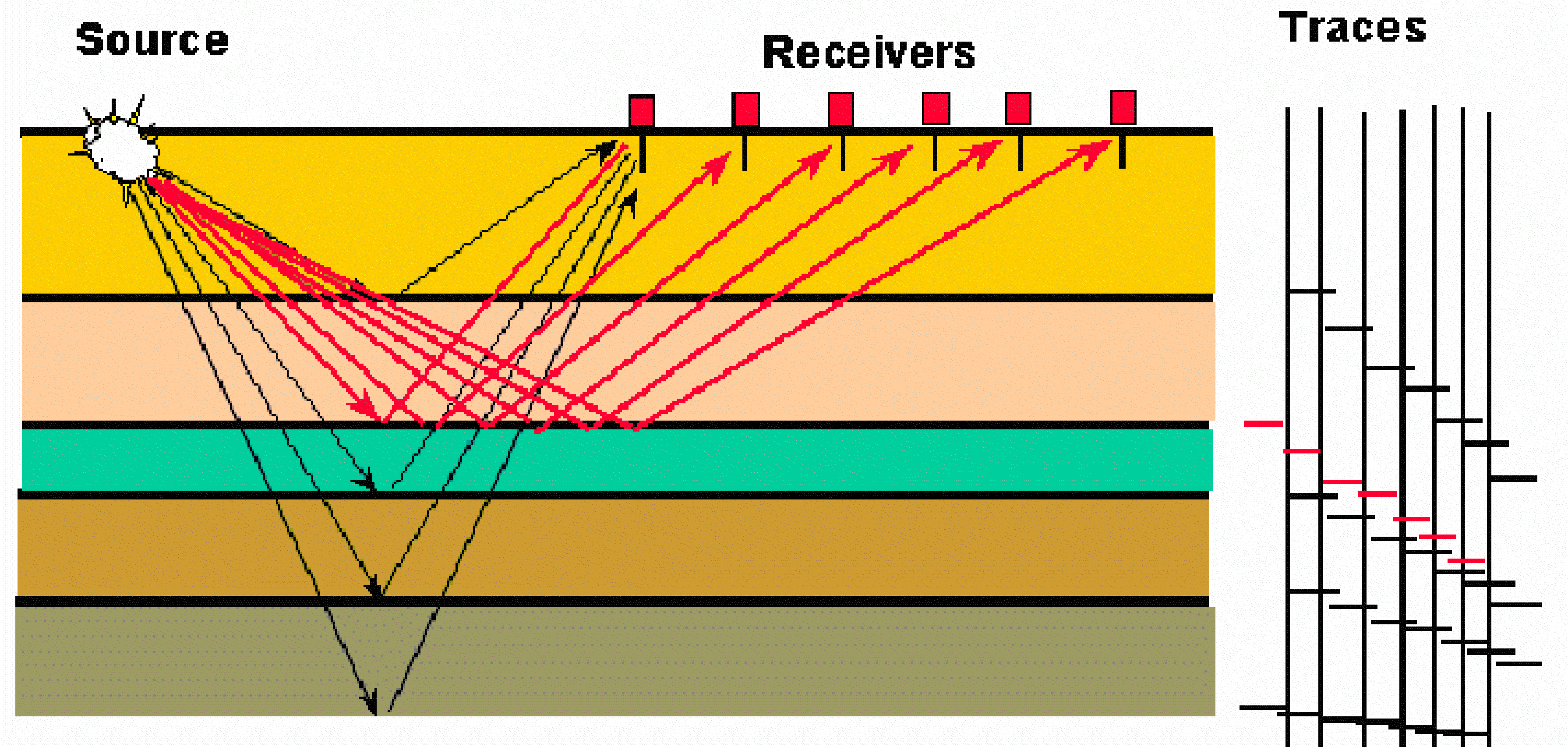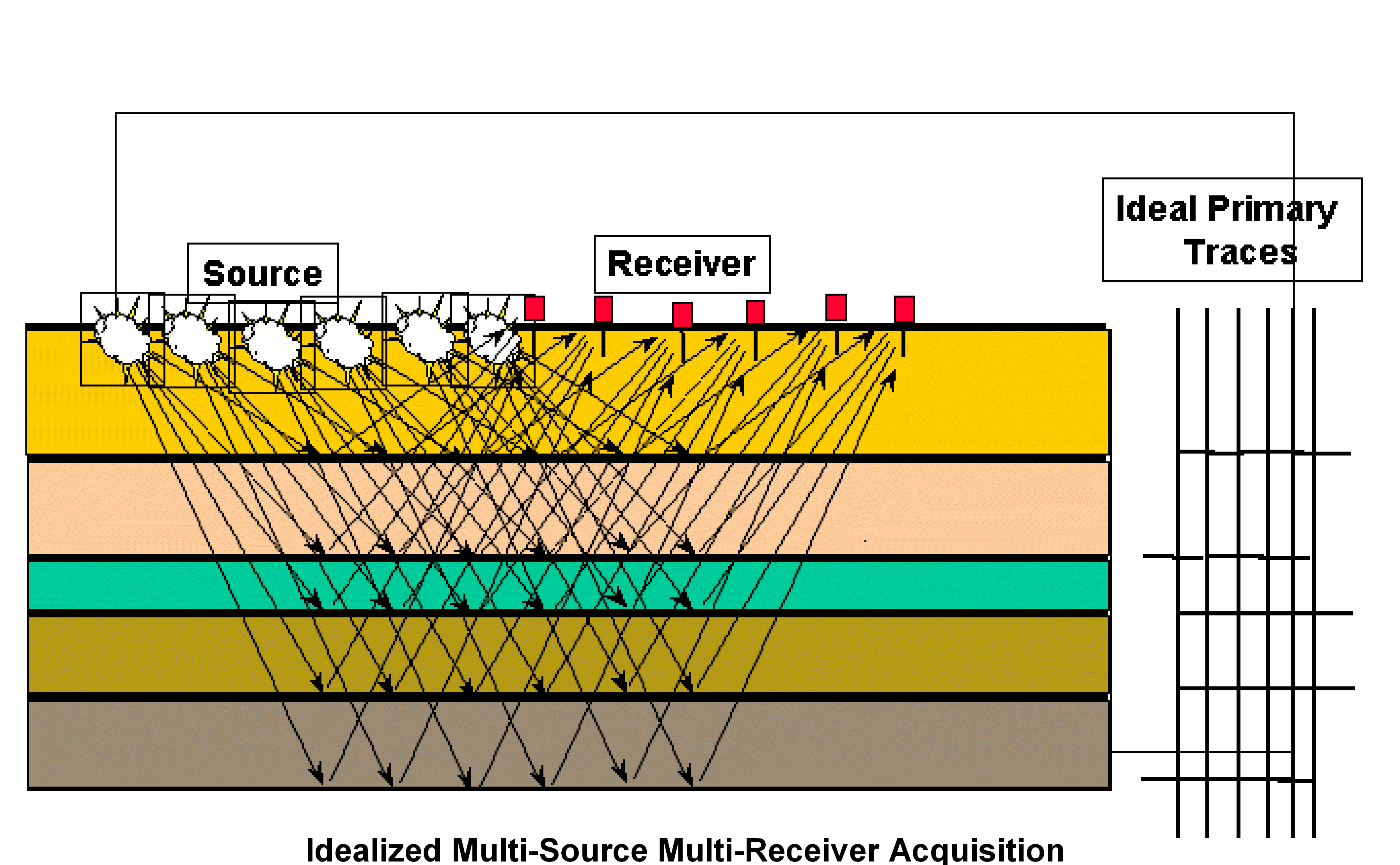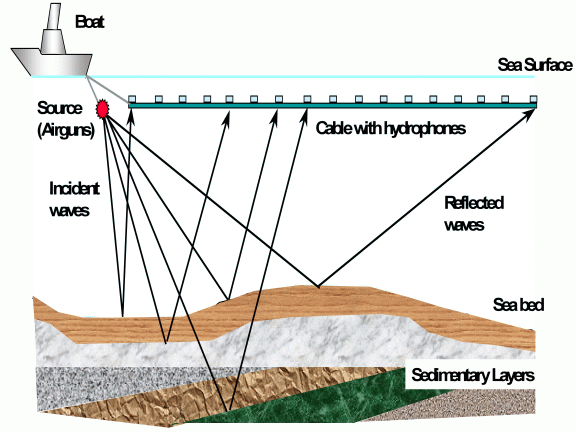
In practice, surface seismic data is usually acquired using several receiver locations for each a source position offset from the receivers. This is because the ratio of signal to noise is low because the reflections are weak in comparison to the direct signal from the source. The figure below is an idealized illustration of an acquisition with a single source and multiple receivers.

Figure 7 Idealized Single Source Multi-Receiver Acquisition
Using this technique we get several traces called a shot gather from each source. Note that the further the receiver is away from the source the longer it takes for the reflection to arrive. The reflections follow a hyperbolic curve with offset, the actual shape depending on velocity of the medium the sound is traveling through.
Several source locations, or shotpoints (abbreviated SP), may be used for the same receiver locations to further improve the subsurface coverage in an efficient manner. The illustration below shows an idealized multi-source multi-receiver acquisition. Each source is activated at a different time, so that for the illustration above each receiver would generate six separate traces. Once all the sources have been activated the entire array of sources and receivers would be moved to the left or right and the process repeated to produce a line of seismic data.

Figure 8 Idealized Multi-Source Multi-Receiver Acquisition
This style is practical for land acquisition, however in marine acquisition a variation is used. The figure below illustrates the technique normally used to acquire a single line of seismic data in a marine environment.

Figure 9 2D Marine Acquisition
In marine surveys a boat tows a source and a long array of receivers called a streamer. Both source and receivers are located a few meters below the water. The source is activated at regular intervals and the reflections recorded by the receivers in the streamer. In addition to avoiding the problems of fixing sources and receivers acquiring data on the move is cost effective.